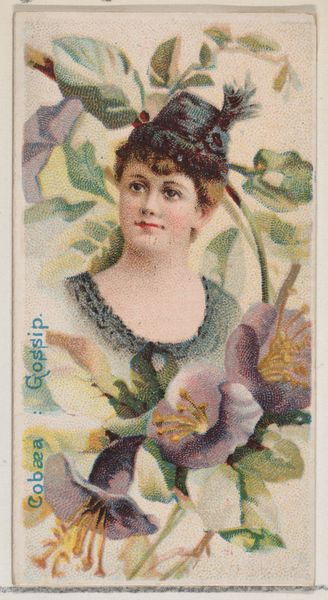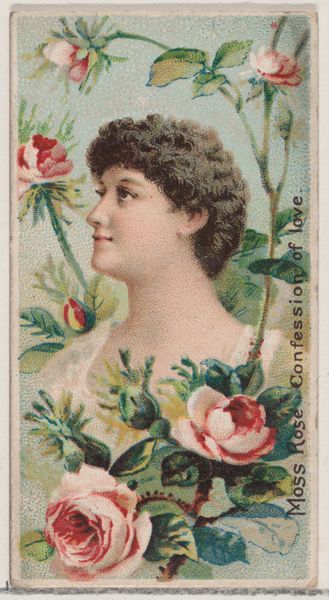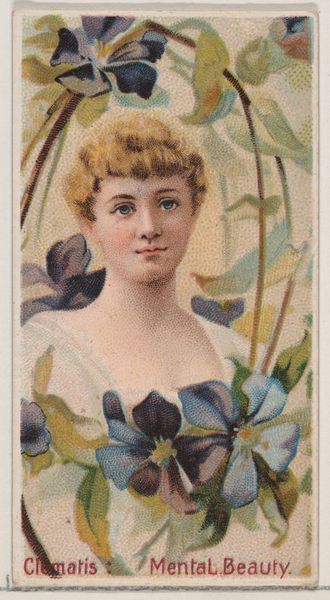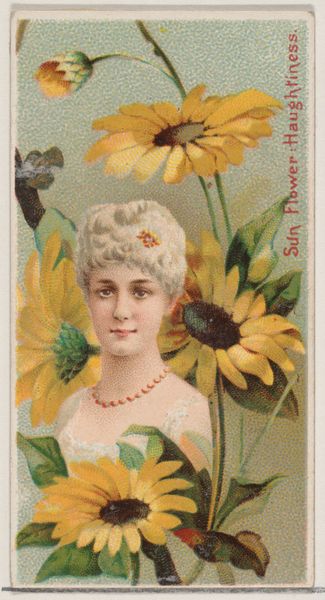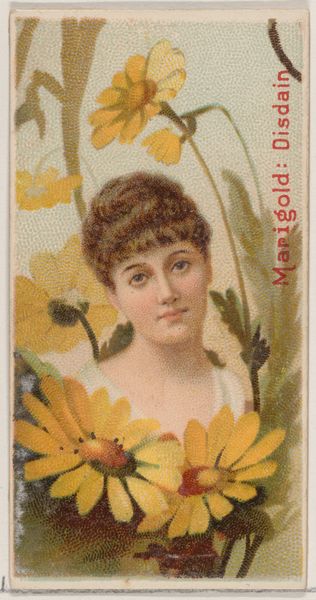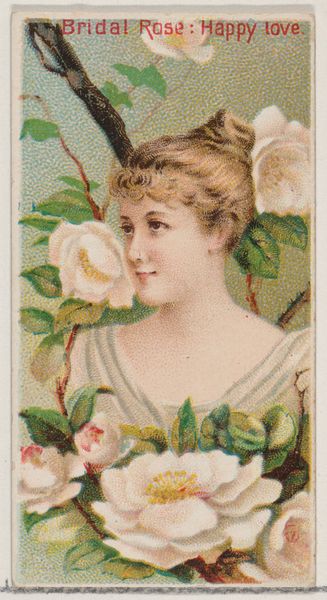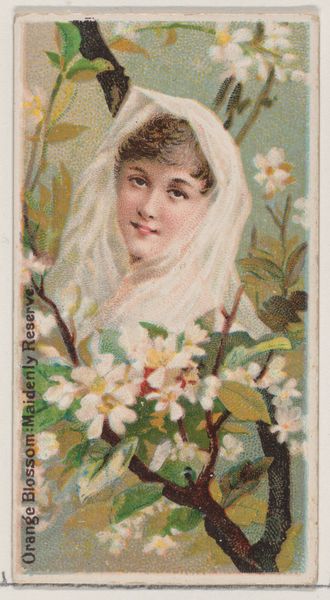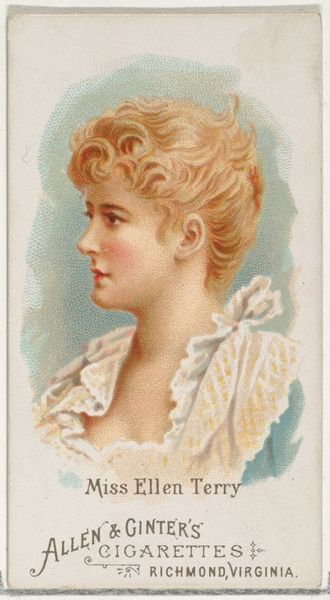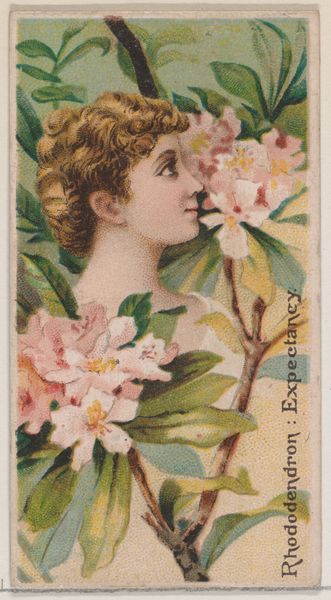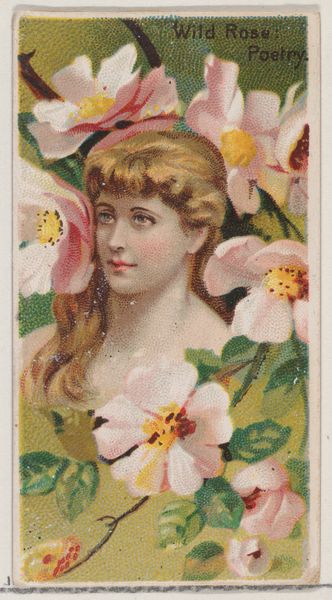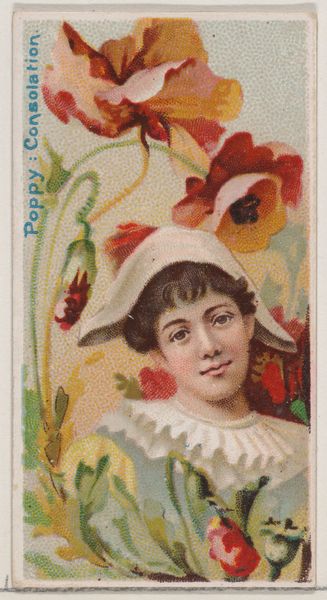
Gilly-flower: Unfading Beauty, from the series Floral Beauties and Language of Flowers (N75) for Duke brand cigarettes 1892
0:00
0:00
drawing, print, watercolor, pencil
#
portrait
#
drawing
#
art-nouveau
# print
#
figuration
#
watercolor
#
pencil
#
watercolour illustration
#
portrait art
#
watercolor
Dimensions: Sheet: 2 3/4 × 1 1/2 in. (7 × 3.8 cm)
Copyright: Public Domain
Editor: Here we have “Gilly-flower: Unfading Beauty,” created in 1892 by the American Tobacco Company as part of a series for Duke brand cigarettes. It combines watercolor, pencil, and print techniques. I’m struck by the blend of fine art portraiture with the commercial nature of its origin. What story does this piece tell you? Curator: Let’s look beyond the surface. It’s a drawing reproduced as a commercial print, initially a drawing and maybe a painting which served a very particular purpose, to be included in packs of Duke brand cigarettes. Its materiality is inextricably linked to consumption and commodity culture. We see the artistic labour serving to enhance a product meant to be sold and ultimately, used up. Editor: So you're saying it challenges the traditional idea of art for art's sake? Curator: Precisely. This was made to be handled, traded, collected alongside cigarette packs, then discarded. The artistry is undeniable, yet it was employed to fuel desire and create a lifestyle association with a particular brand. It elevates smoking with beauty, fleeting as it may be, just like those consumable flowers. Editor: And the flower choice itself… “Unfading Beauty”? Curator: It hints at the marketing strategy. While flowers wilt, beauty persists, at least so the producers of cigarettes want you to think when their product gets placed in your pocket every morning. Advertising employed artwork, the cultural status of which granted additional commercial and social capital. Where did the artist fit in that commercial environment? Was this art, craft, or both? It definitely was a sign of industrial power at play! Editor: That is quite different than what I would have initially interpreted from a portrait including “floral beauties!” Thanks! Curator: Considering the purpose behind artistic creation truly shifts the narrative, doesn't it? I also have gained more thoughts during our talk!
Comments
No comments
Be the first to comment and join the conversation on the ultimate creative platform.
